Homemade Food Coloring (All Natural + Vegan)
Disclosure: This post may contain affiliate links
Let me show you how to make all natural homemade food coloring from plants! Yup, vegan food coloring! Pictures and tutorials included!
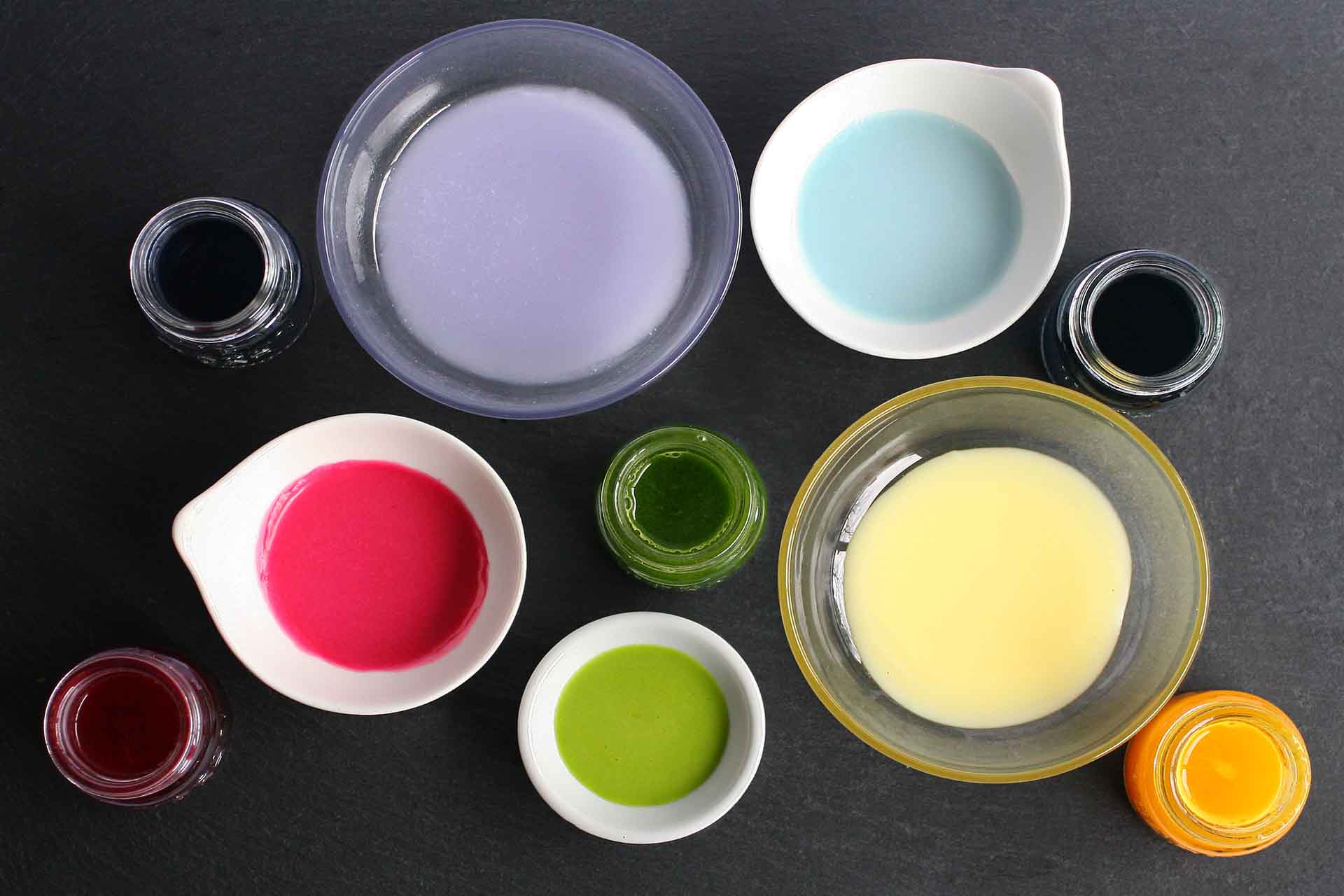
What's in this post
First things first, friends
Some years ago, I wrote one of the most popular articles on this site, Warning: What You Don’t Know About Food Coloring. The article is about how artificial food coloring is tested on animals, and it’s possible to make them at home with stuff you probably already have in the fridge.
I know I know: I talk about animal testing a lot.
I’ve talked about how honey is tested on animals, and I’m constantly talking about how artificial food colors are tested on animals. Seriously, animal testing sucks and can yield dangerous results when physicians treat patients using medicine based on the results of these studies.
I mention these things because not everyone knows how pervasive animal testing is. More than just health & beauty products and medications are tested on animals; we should be talking about that.
It’s the whole “the more you know, the more informed choices you make” thing.
A quick note about artificial food colors
Before I get too far, please don’t send me hate mail with angry emoji faces saying, “What is wrong with you?! If something is tested on animals, that doesn’t mean that it’s not vegan!”
Honestly, please don’t.
Here’s the thing: Veganism is an ethical philosophy that begins with the idea that humans shouldn’t be using animals in any way. If we are testing artificial food colors on animals, we use animals. And while it’s true nearly every substance we consume was once tested on animals at some point, this doesn’t mean we should continue to use products we know are currently being tested on animals, like artificial food colors.
If this is all new to you, read this article about artificial food coloring. In it, you’ll learn about the seven most commonly found food dyes in some of your favorite foods. And you’ll discover how these food dyes are tested on animals. Spoiler alert; the tests cause death in 100% of the animal participants.
Artificial food colors are unnecessary, toxic to our health, and tested on animals.
There’s a better way.
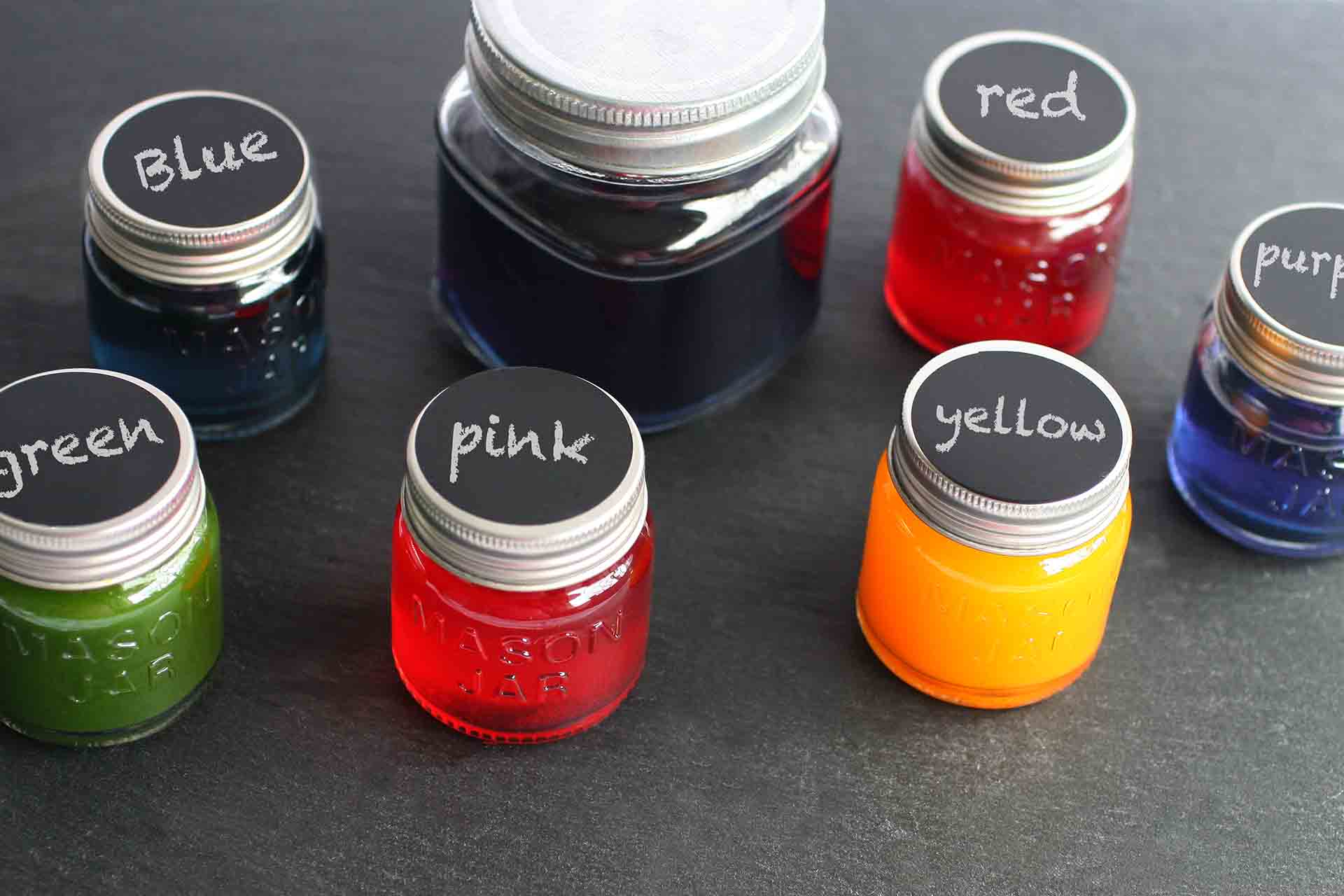
A colorful array of vegan food dyes / Source
Introduction to homemade food colors
Since I hate artificial food colors, I thought I’d show you how to make DIY colors. Like a pretty food color tutorial, if you will. None of these colors are hard to make, and they won’t hurt you, your family, or any poor animal destined for a life in a lab.
Bonus, they’re cheaper than buying the pre-made versions too!
Let’s talk about all-natural and vegan food colors.
Look at those colors! Yellow, blue, red, purple, and green. All colors can be made at home with simple ingredients in your fridge or pantry—no weird synthetic chemicals are required.
And since you’re looking, check out those miniature mason jars! Adorable! My love of all things tiny has been long documented on this blog, so you should have expected that from me by now ;)
Let’s take a look at how to make each color. Trust me; it’s not complicated or expensive.
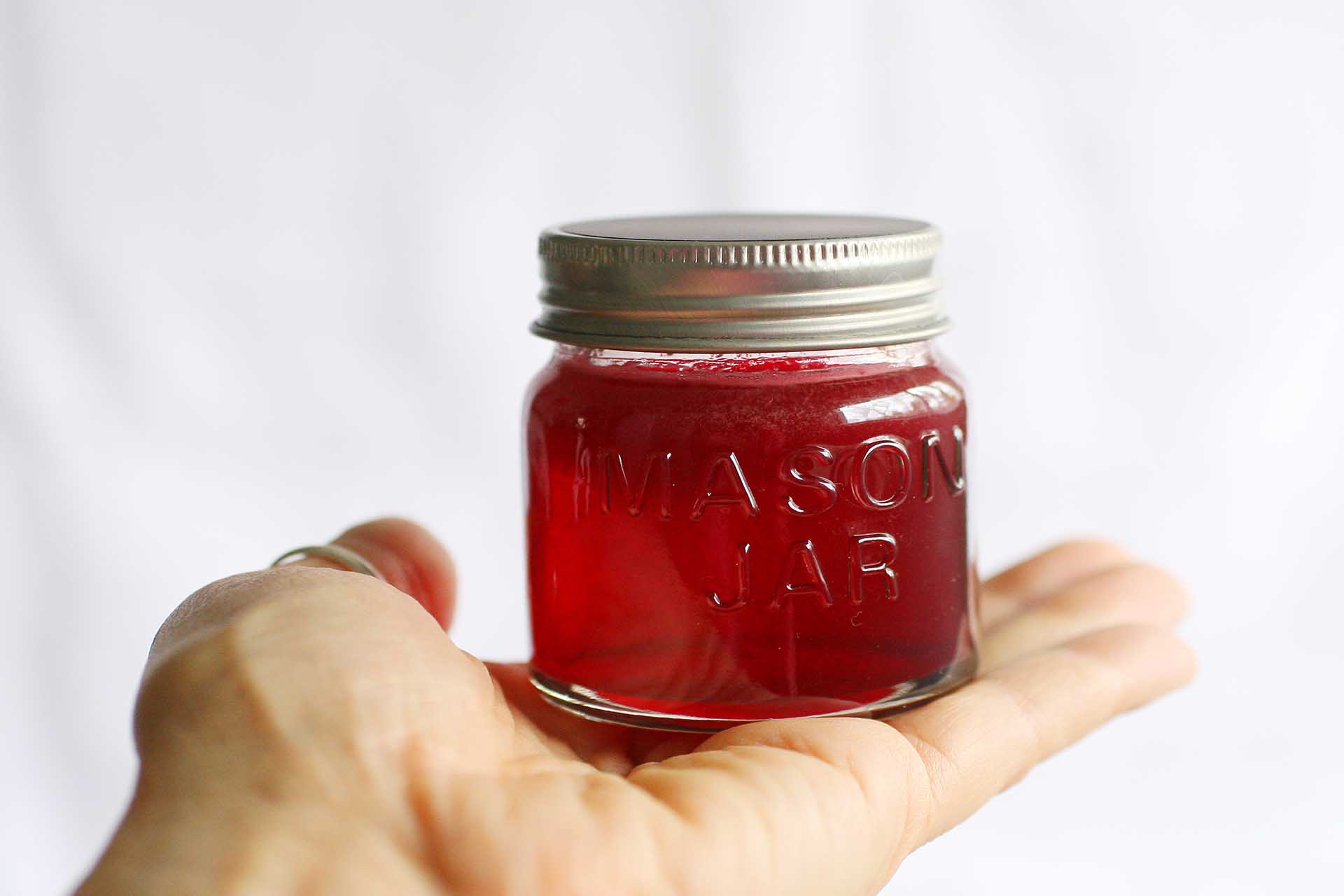
Red food dye / Source
All-natural red and pink food dye
Of all the colors, red is probably the easiest to make. Beet juice is the best choice because it will give you the most deep red color, although cherry juice will also work. However, cherry juice is more expensive.
To make red food coloring, run a raw beet through a juicer. Use the beet juice in the same manner as you would synthetic dyes.
If you don’t own a juicer, you can use this method to extract juice from raw beets. Start by placing a paper towel over a large plate. You could also use a clean tea towel but keep in mind that beets stain. Using a box grater, finely grate a raw beet onto the paper towel taking care not to get any on the counter. Once grated, gently pull the paper towel around the grated beet and squeeze the juice into a bowl.
Easy, peasy.
Also easy is buying a bottle of pre-made beet juice, though I found that making your yields the best results.
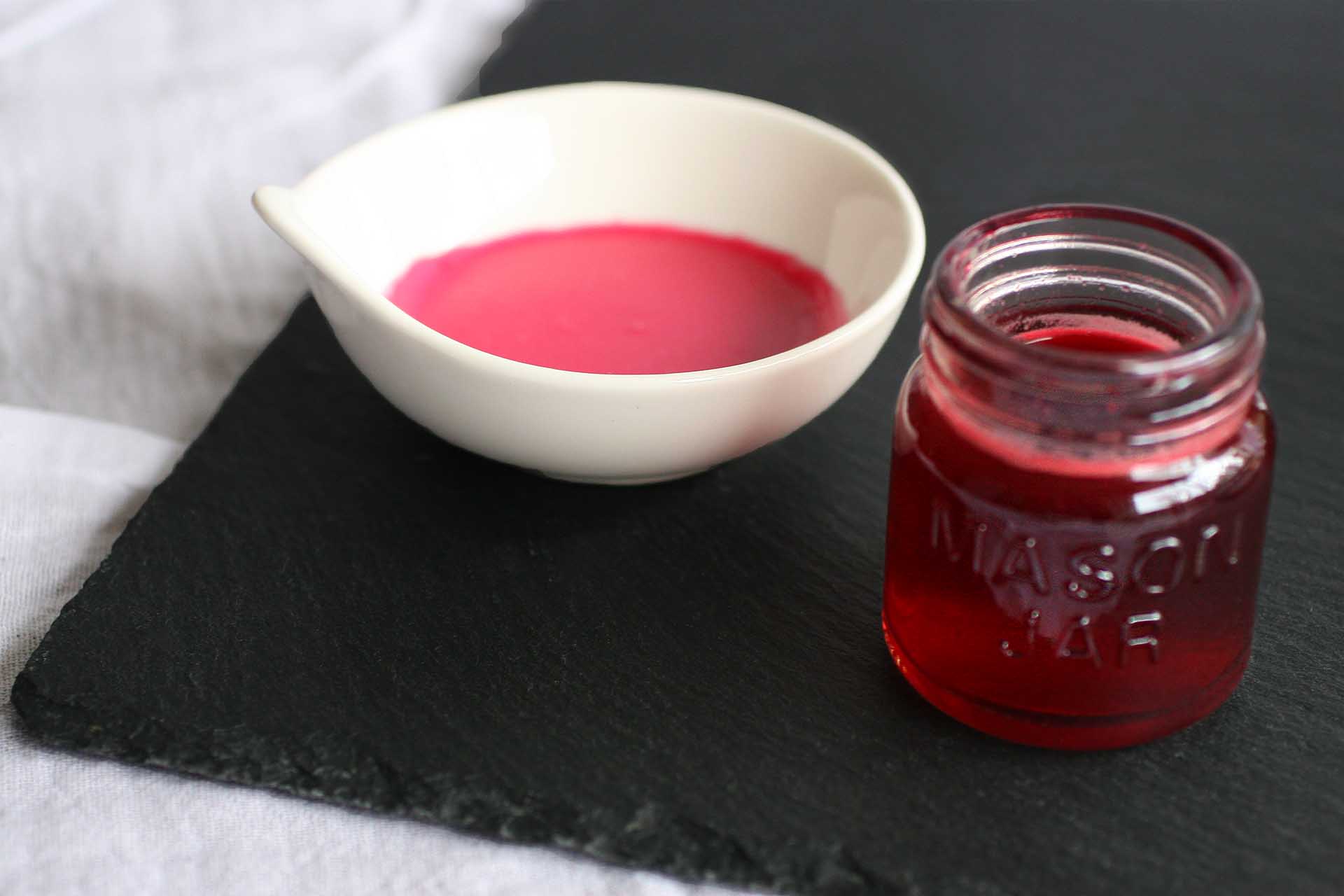
Icing made with confectioners sugar, corn syrup, and homemade red food coloring using a ratio of three parts beet juice to one part red apple juice / Source
Tips for using homemade red food dye
To help sweeten the flavor of beet juice, mix one part apple juice with three parts beet juice. I tend to use red apples in food dyes because of their sweetness, but green ones would also work. Adjust the ratio of apple juice to beet juice to achieve different shades of red, including pink.
It should be noted that it isn’t necessary to sweeten the beet juice before use. Straight beet juice offers a darker, more vivid red color. And since beet juice doesn’t taste awful on its own, it’s fine to use as is. But it’s nice to have options, so now you have two. Choose the method that works best with the recipe you’re using.
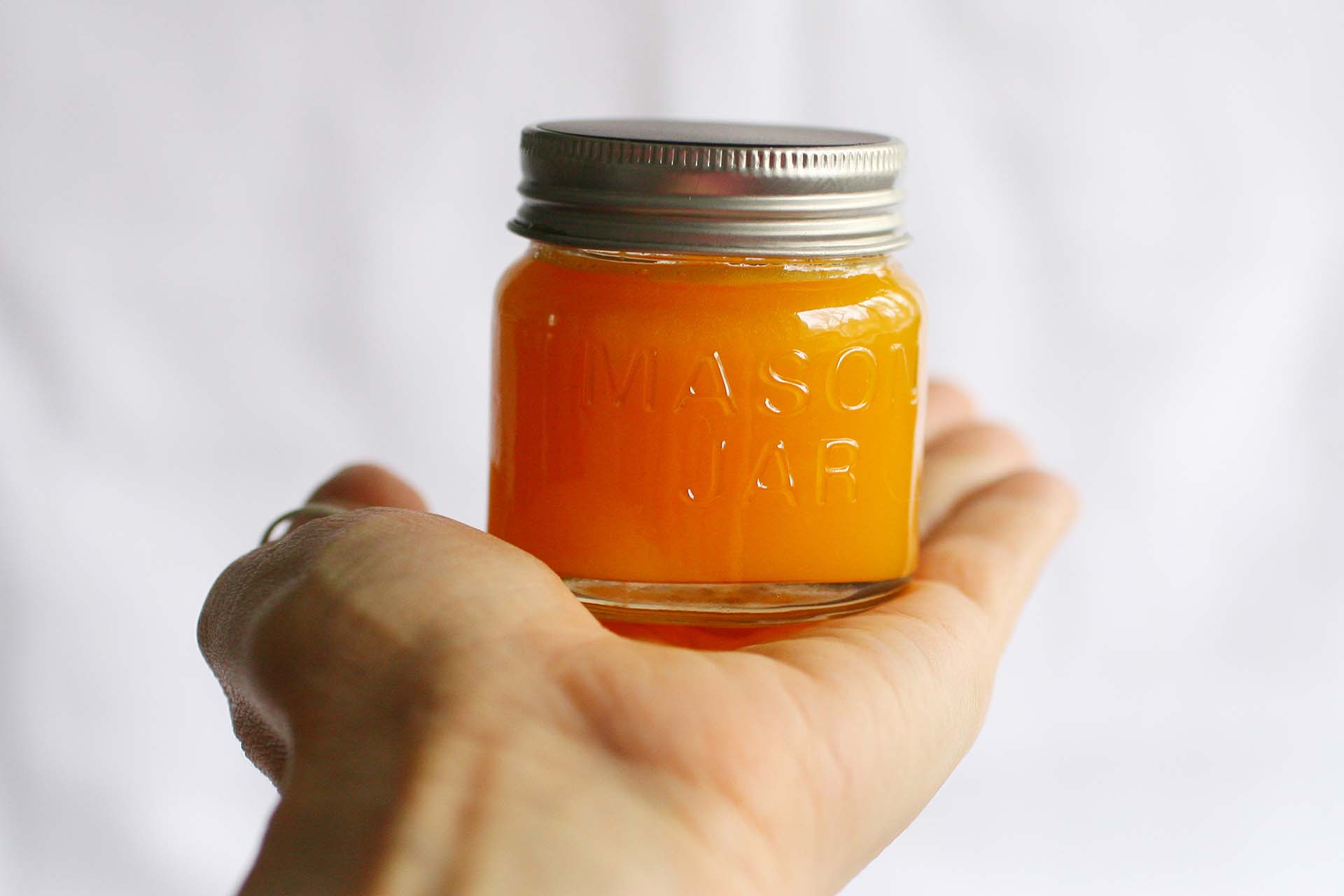
Yellow food dye / Source
All-natural yellow food dye
Much like homemade red food dye, making a vibrant yellow dye is easy too. The first thing you’ll need to get your hands on is some turmeric. Fresh or powdered, it doesn’t matter. Either will work with this method.
Pro tip: Buy your spices in bulk whenever you can. It’s insanely cheap to do so because you only pay for what you need, not the packaging.
You’ll find powdered turmeric in the spice section of the grocery store. Or, skip the powdered turmeric and go fresh. Fresh turmeric is located alongside fresh garlic; it looks like a pretty orange ginger root.
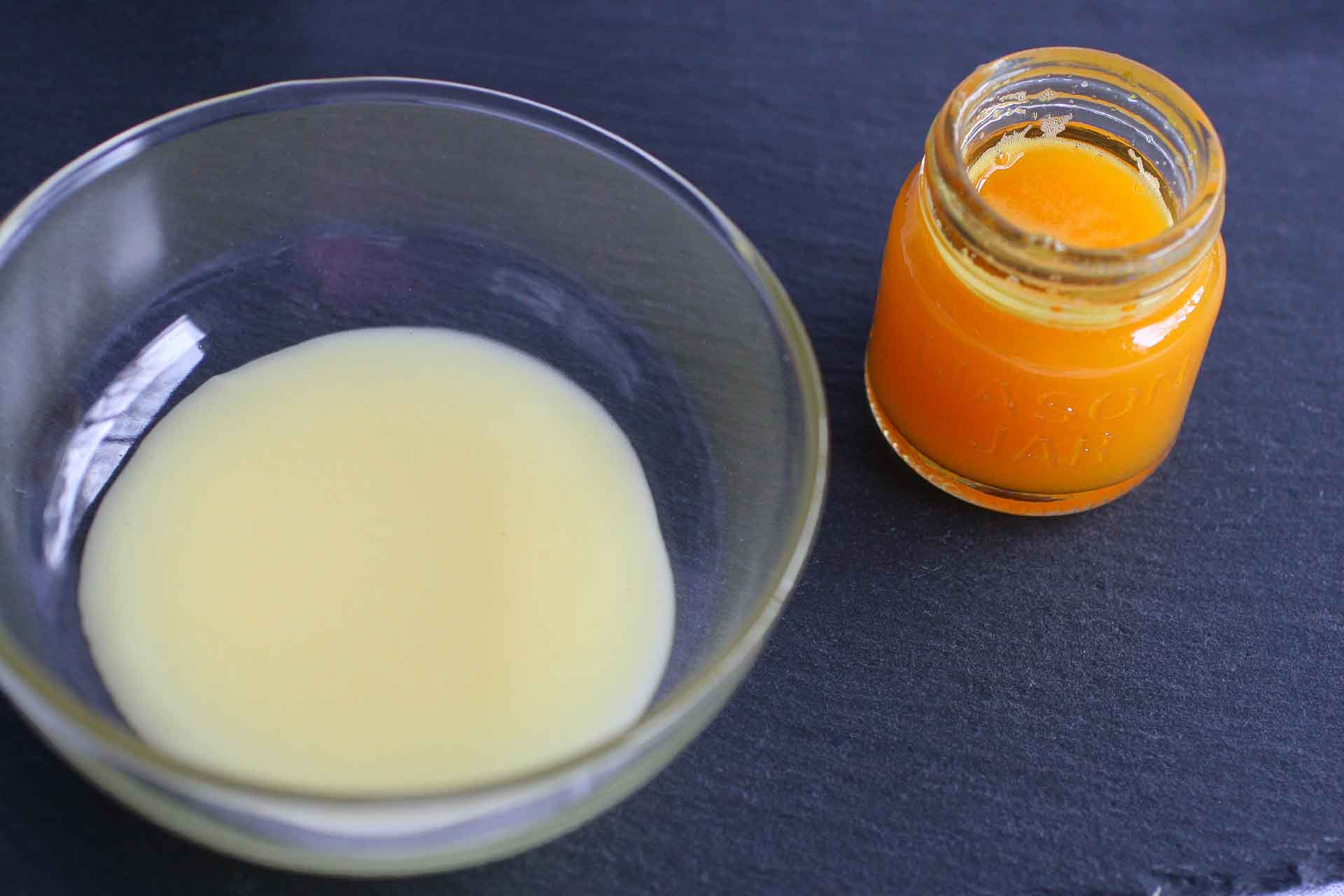
Icing made with confectioners sugar, corn syrup, and homemade yellow food coloring using apple juice and powdered turmeric / Source
Tips for using homemade yellow food dye
Turmeric has a robust taste, especially when it’s fresh. To balance its strong flavor, I mix fresh apple juice with turmeric juice, just like I do when I make red food color from beets. I use the same three-to-one ratio, only in reverse. For a bright, vivid yellow food color, use three parts fresh apple juice to one part fresh turmeric juice.
Powdered turmeric will still yield a bright, vivid yellow color. You’ll use the same method of combining it with apple juice; however, you won’t use the same ratios. Instead, start with the amount of apple juice you’ll need for the amount of coloring you want. Next, add the tiniest amount of turmeric and stir well. Add more turmeric as necessary to achieve the color you’re looking for.
Remember, you won’t need a lot of apple juice, only make as much as you need. With turmeric, a little color goes a long way.
If you’re looking for orange food dye, mix some yellow and red food dyes together until you get the shade you want.
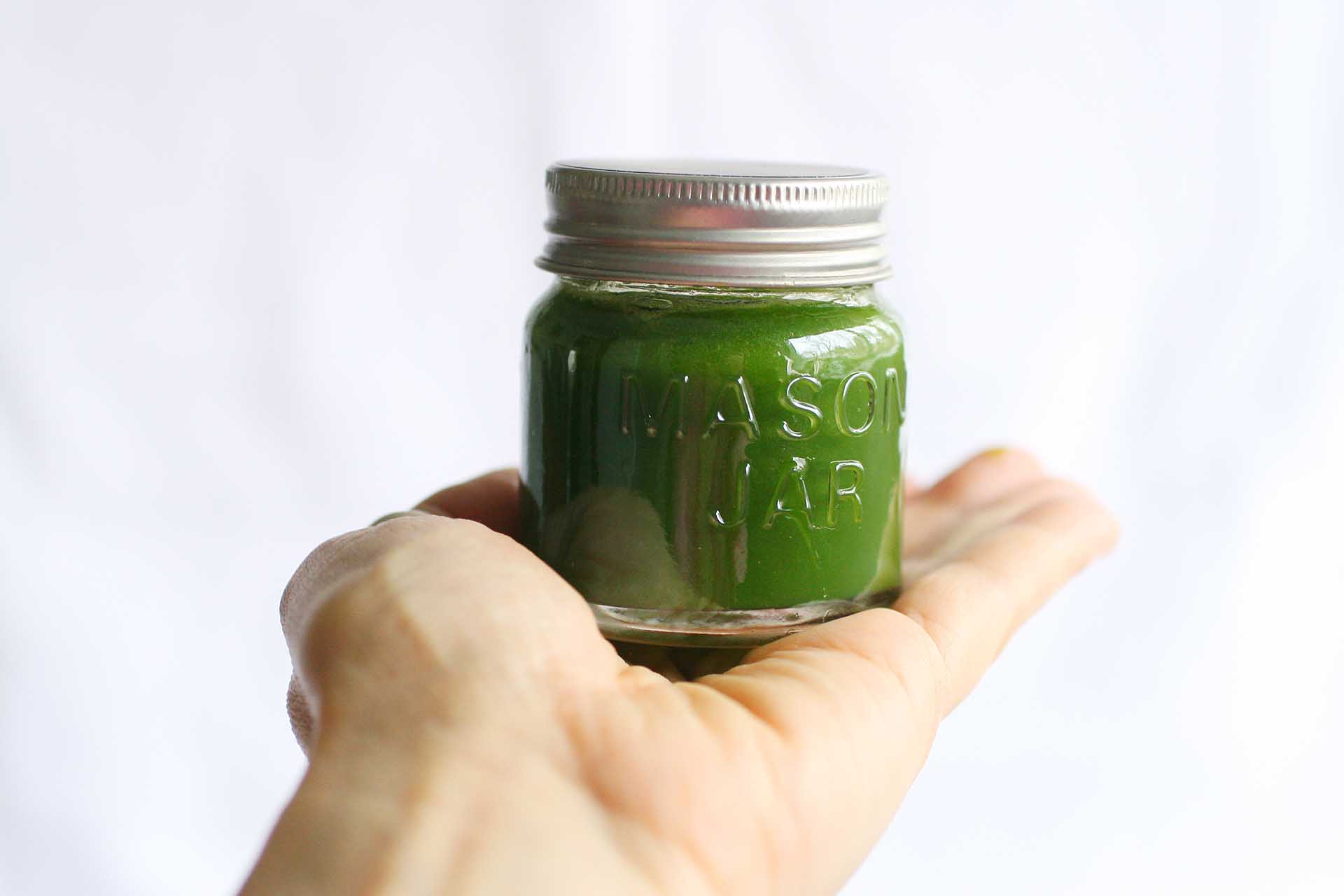
Green food dye / Source
All-natural green food dye
Honestly, I’m starting to feel bad even calling these food colors “recipes.” They’re so simple.
Homemade green food coloring can be made using an array of foods. You could opt for powders like matcha or green tea. Or, use the juice of green vegetables such as kale or spinach. One ingredient and done.
Just to let you know, some people claim that they can taste the kale or spinach juice in foods that have been dyed using this method. However, this has never been my experience. If you are concerned that your green food coloring will have a “too green” taste, simply use the apple juice method to sweeten things up.
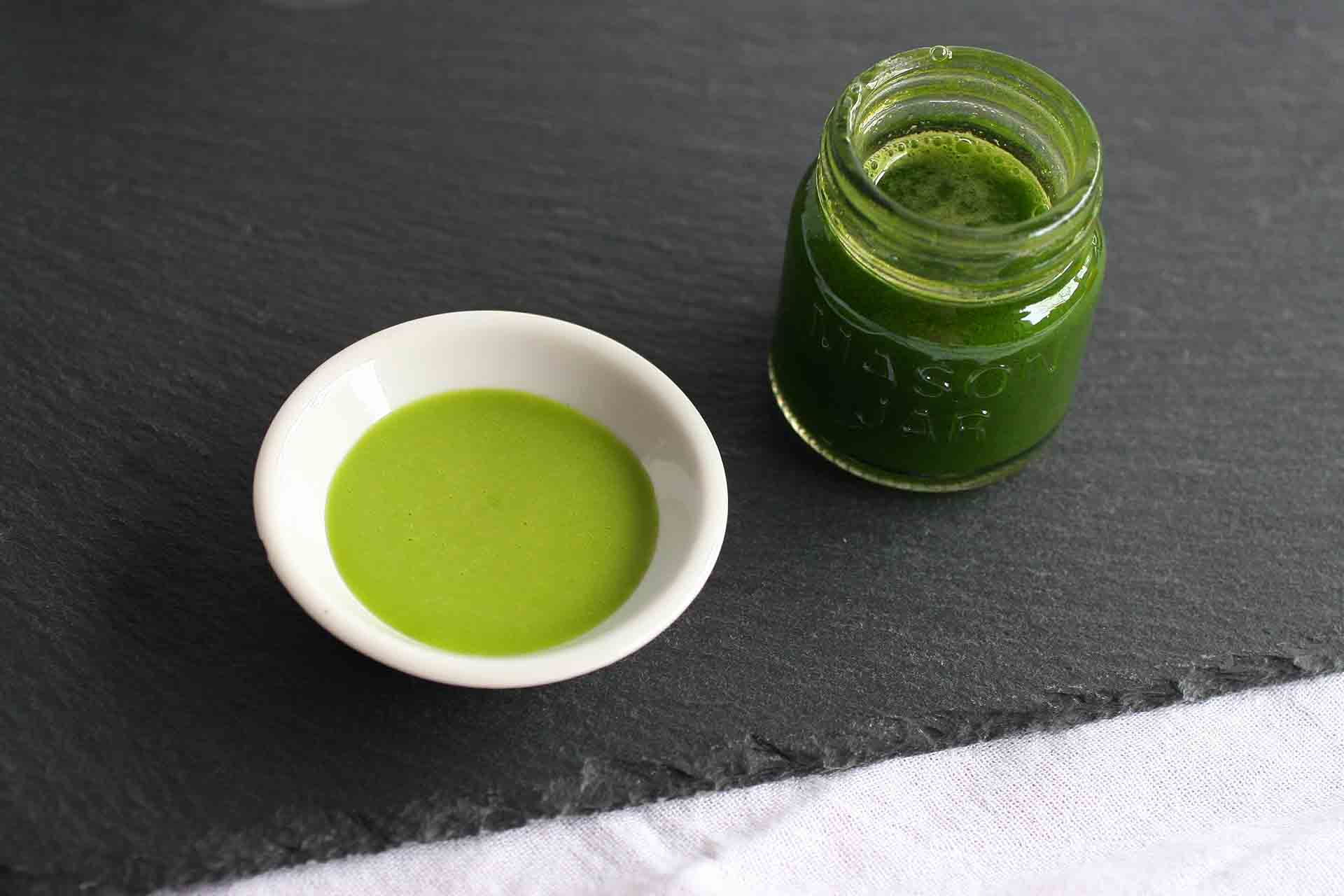
Icing made with confectioners sugar, corn syrup, and homemade green food coloring made from kale juice / Source
Tips for using homemade green food dye
You can change the color of green by becoming a mixologist. For a pretty spring green color, mix yellow and blue dyes together. Or, if you’re going for a lovely teal color, mix blue and green together. Remember that using the apple juice method for sweetening will dilute the color ever so slightly. Add more or less juice to achieve the perfect level of color.
Keep tweaking the color until you get the exact shade of green you’re looking for.
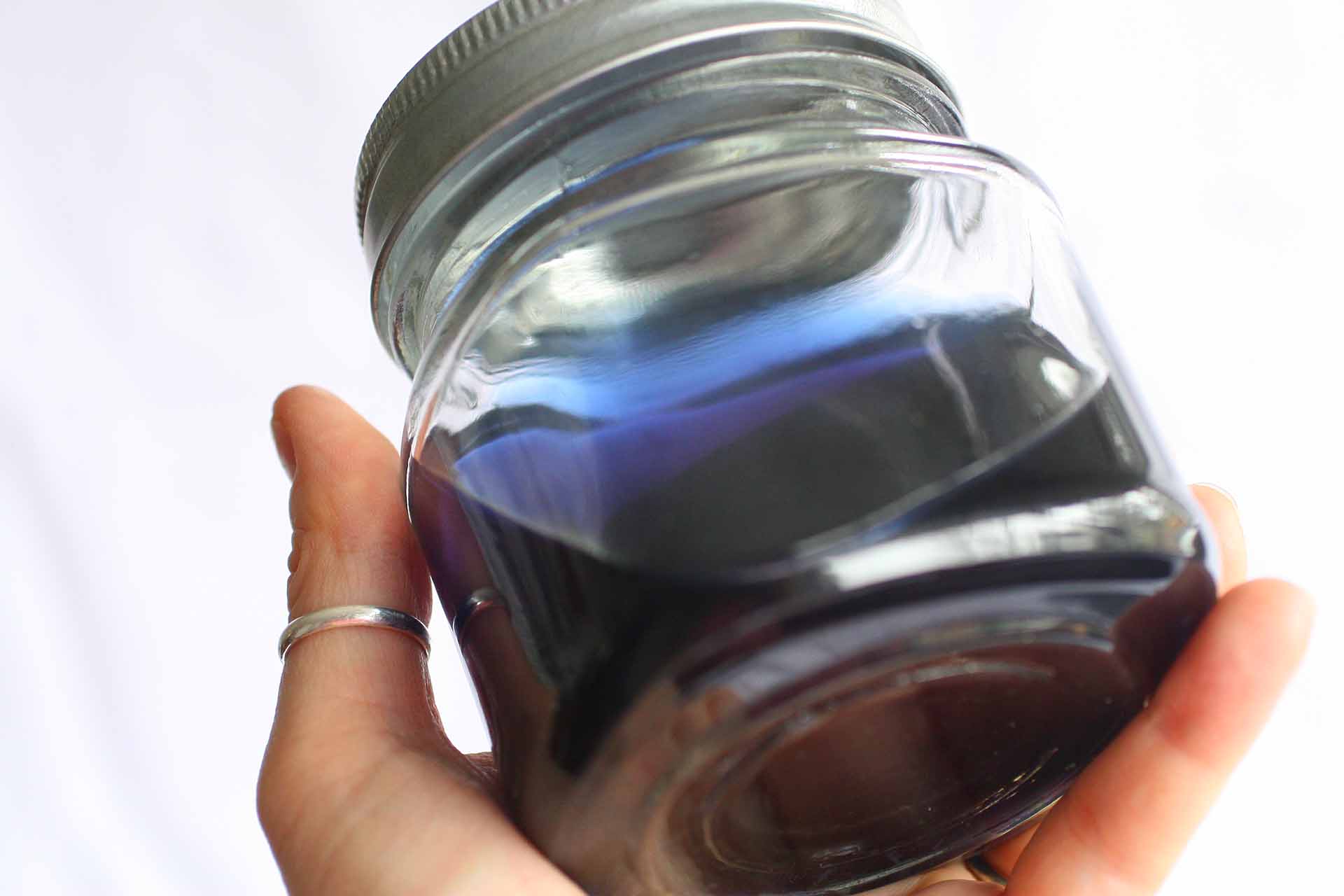
Purple food dye / Source
All-natural purple food dye
I have to be honest; while I love all colors, I really love this pretty purple food coloring. Interestingly, both purple and blue food dyes come from the same ingredient but are used in very different ways. And believe it or not, that ingredient is purple cabbage.
Yes, purple cabbage.
Here’s how to do it. Start by removing the cabbage’s four or five outer leaves and washing them to remove any dirt. Next, give the leaves a rough chop and dump them into a pot. Add two cups of water to the pot. Then boil the pot of water and cabbage, and simmer for five to ten minutes. After ten minutes, turn off the heat and remove the cabbage leaves from the pot.
Don’t discard the water! It should be a deep, deep purple. Pour the water into a heat-safe jar or bowl and allow it to cool completely.
Congratulations, you now have all-natural purple food coloring that’s ready to use.
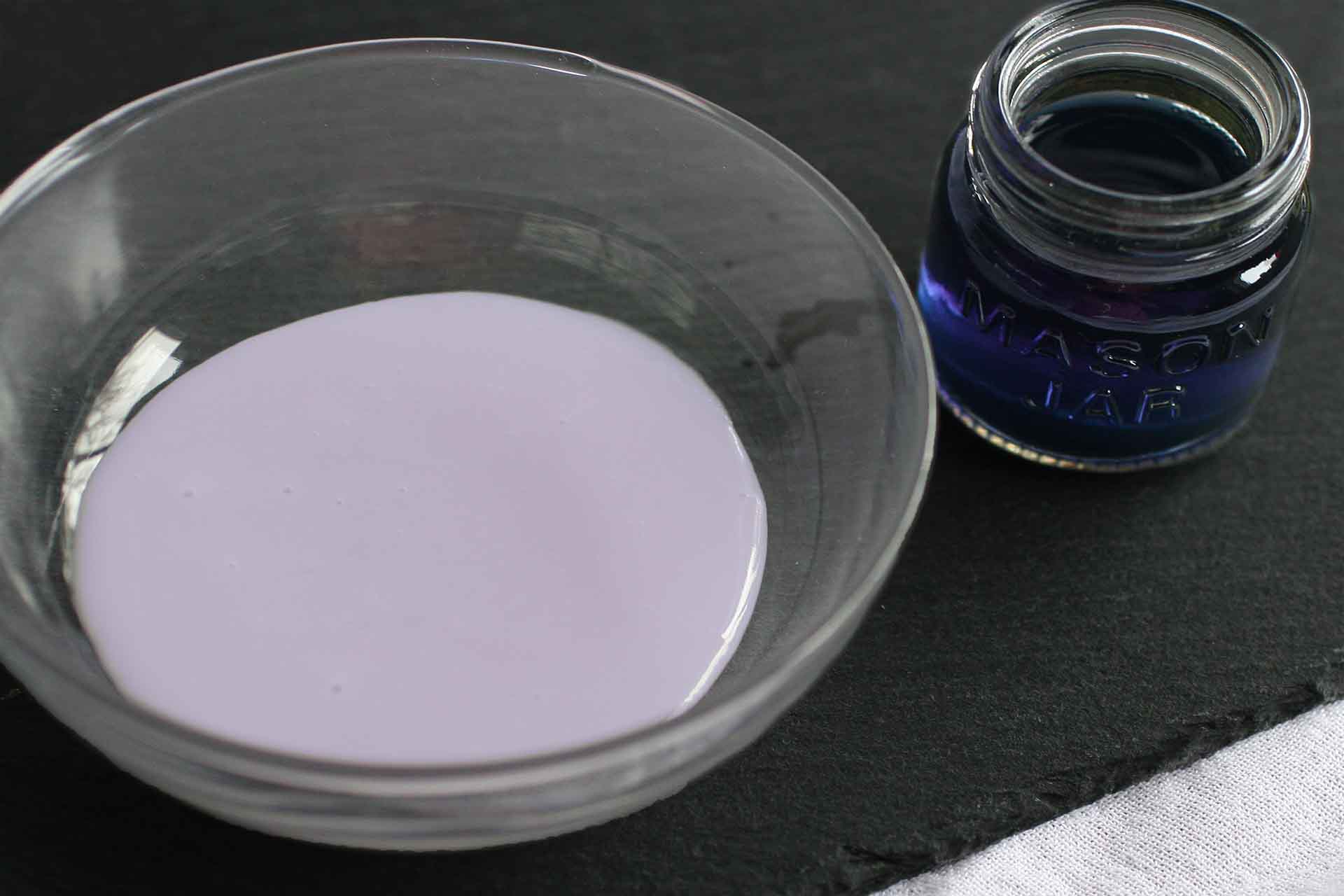
Icing made with confectioners sugar, corn syrup, and homemade purple food coloring made from purple cabbage / Source
Tips for using homemade purple food dye
Generally speaking, I don’t use the apple juice method when making purple food color because I want the deepest color possible. And you should be aware that the purple color will smell like cooked cabbage because that’s what it’s made from.
To test whether or not the cabbage flavors foods dyed with this color, I made my standard royal icing. Then I asked a friend to taste the icing. They couldn’t detect any cabbage flavor, and neither could I.
I know I keep saying how pretty these homemade food colors turn out, but they really are. This purple is just as pretty as those artificial concoctions and isn’t made with ingredients I’m not afraid to eat. And that’s something I like a lot.
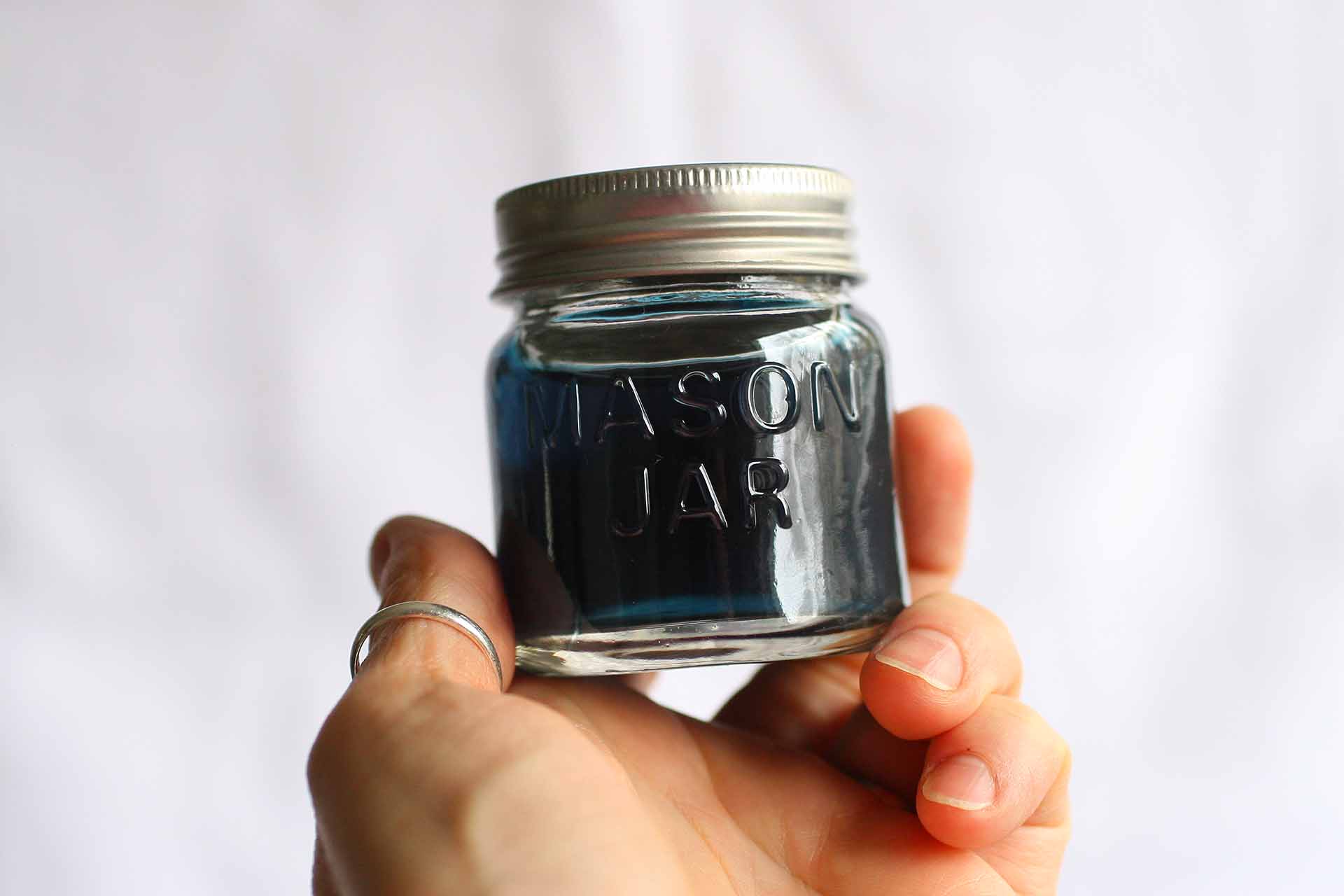
Blue food dye / Source
All-natural blue food dye
Lastly, blue food dye. That’s right, unicorns; you can finally have pretty blue for your confections! While blue is trickier than the other colors, it’s still easy to do.
You’ll start the same way as when making purple food color. Remove four or five leaves from purple cabbage, wash and roughly chop them, and add two cups of water to a pot. Bring the pot to a boil, and simmer for five to ten minutes. After ten minutes, turn the heat off and remove the cabbage leaves from the pot, saving the purple water.
Pour the water into a bowl and allow it to cool completely. Cooling the liquid is very important. If it’s even slightly warm, the color won’t process correctly.
Once the cabbage water is completely cool, add the tiniest amount of baking soda, and whisk until thoroughly dissolved. The color will change from purple to blue almost immediately, so you can quickly tell what shade of blue it is.
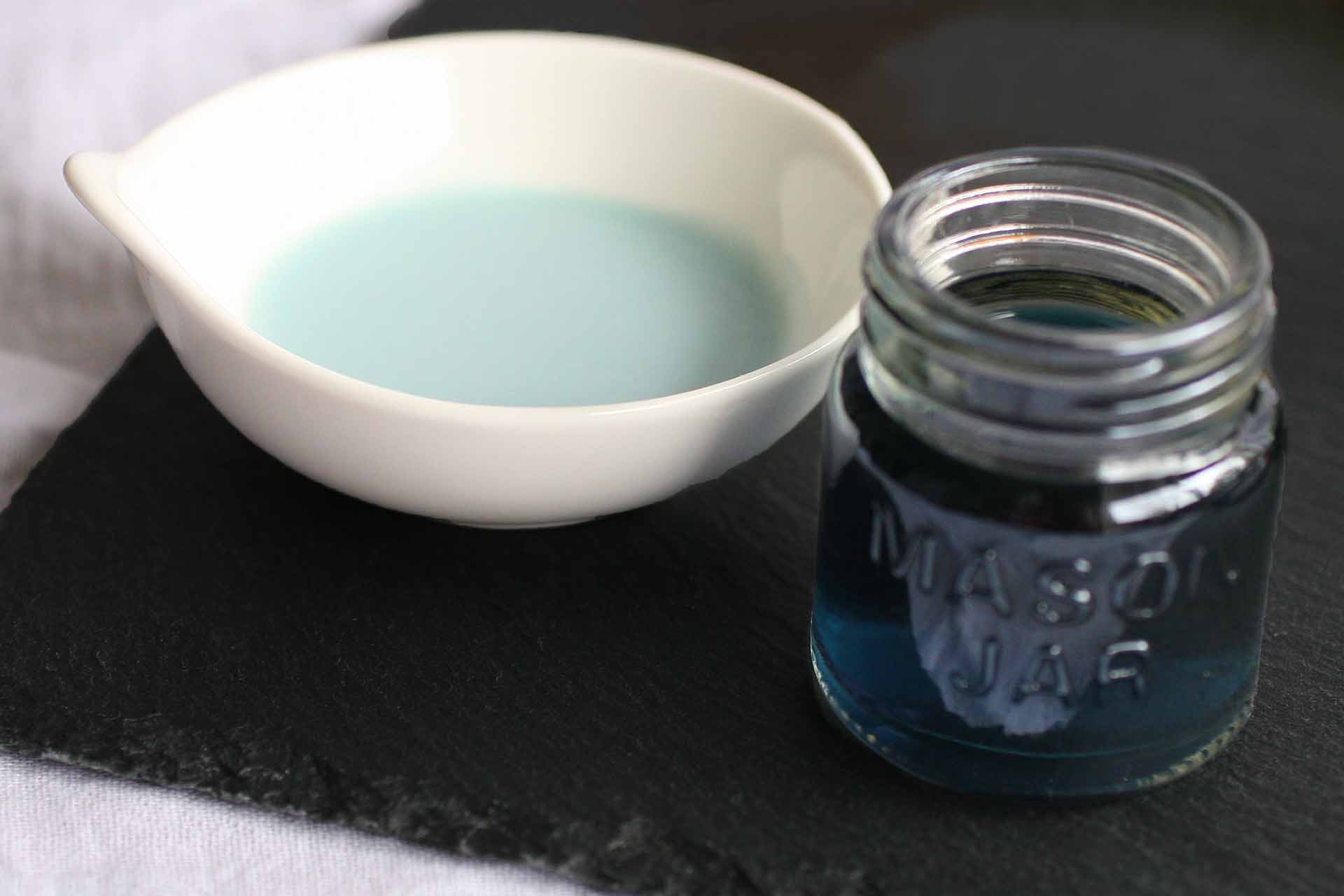
Icing made with confectioners sugar, corn syrup, and homemade blue food coloring made from purple cabbage and baking soda / Source
Tips for using homemade blue food dye
Be careful about how much baking soda you use when mixing the color. Only use the amount you’ll need to get the exact shade of blue you’re looking for. Adding too much baking soda could add a not-so-pleasant taste to the final product.
No one wants to have a sweet baking soda-flavored cookie, trust me. Gross.
I added approximately 1/8 teaspoon of baking soda to my purple base to get the blue color above. Just be cautious when mixing, and you’ll be fine.
To test the flavor, I made a batch of royal icing and dyed it using the homemade blue dye. I was satisfied that I couldn’t taste any baking soda, nor could my taste tester. Or any other of the taste testers in the plenty of times I’ve made it since.
I know I said how much I love purple, and I do, but anyone who knows me knows that blue has always been my favorite among all colors.

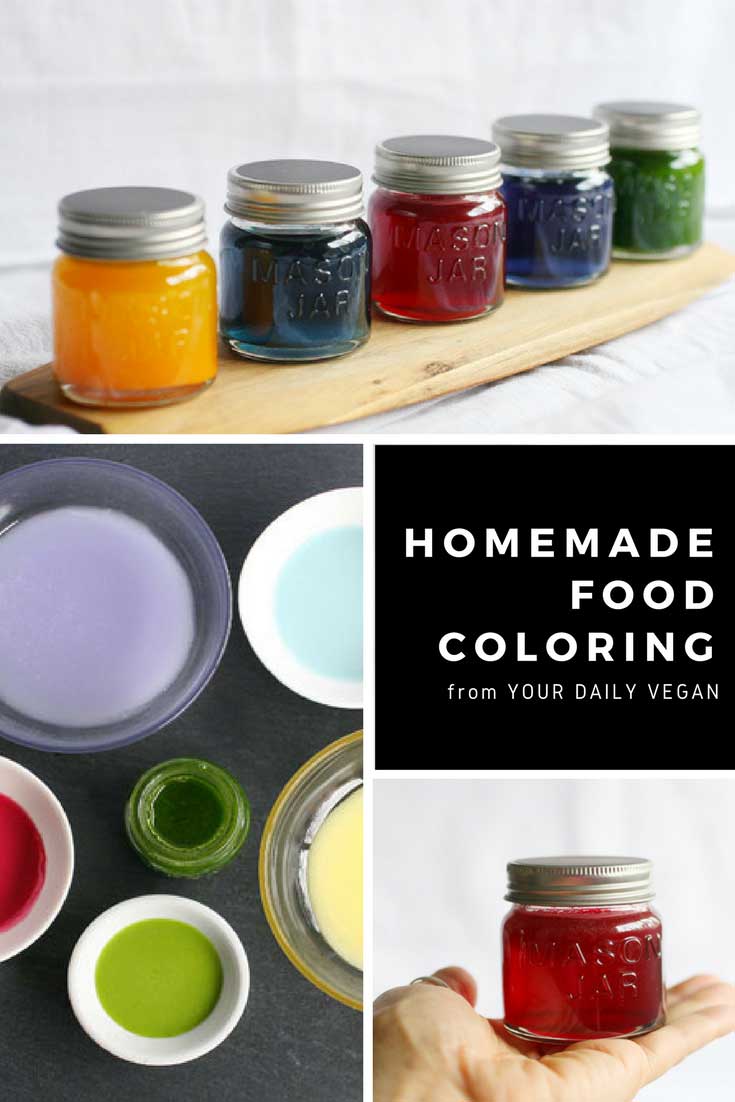
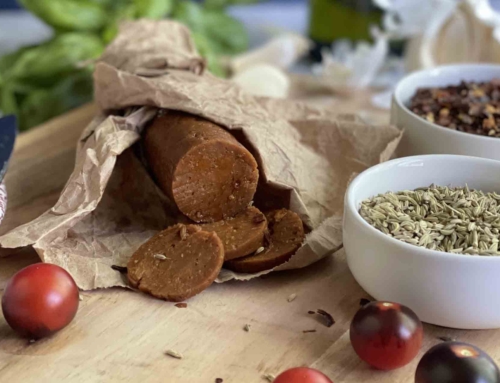




Any ideas for making tofu crumbles look more like browned burger? My taco filling looks pink!
What type of tofu are you using, and are you using it in a savory or sweet recipe?
One can use spirulina for both blue and green….Activated Charcoal powder for black as well….carrot-turmeric-beet-apple-lots of powdered orange zest to make orange food coloring!
I’m excited to make my own food coloring! I will say that I work in the medical field treating cancer patients and we do researching using animals and it’s been wonderful how treatments can be more advanced to save lives because of the research that is done. I understand not using animals for beauty products but when it comes to the medical field we are under strict guidelines and modern medicine and surgeries and procedures would not be where they are now without research. I advise you do more research if you are going to be putting your personal option on everything you write.
Hi
I tried the purple and the blue clours
I coloured coconut flakes to make some sprinkles
The blue turned out amazing at first but turned into turquoise after two hours
Any idea what went wrong?
Hello!! Any idea for a gray color? Thanks in advance. Can’t wait to try these!
Generally speaking, mixing equal amounts of red, blue and yellow colors to makes a grey color, but I’ve never tried it myself. Let me know if you try it and it works out!
[…] you want, you can even make your own, natural, green food coloring. My favorite recipe was found on Your Daily Vegan. It is basically green apple juice and kale […]
I can’t wait to try to make my own! How would you nake white?
I’m never really a fan of artificial food coloring. I almost always never add artificial food coloring to my desserts. These vegan food coloring though looks really good! I can finally add color to my decadents, thanks to your recipe! Thank you so much!
[…] As always when it comes to alcohol, you can check whether your spirit is vegan friendly using alcohol checkers such a barnivore. If food colouring is required, why not make your own vegan friendly dye? […]
Hi.
I am excited by the idea of making natural food colours. However, I am allergic to turmeric. What could I used instead to create yellow food colouring?
Thanks!
Hi! You could try using the saffron. It’s expensive, but it creates a vibrant yellow color. Don’t use too much, saffron has a distinct flavor. Good luck :)
[…] also love DIY Natural Dyes at Home. Many ingredients are already in your pantry or […]
[…] Vegan purple food dye (try mixing these blue and red […]
thank you for posting this. anyone who sends you hate mail or anything critical because you are trying to save animals is not worth paying attention to!!! no one should have to apologize for trying to make the world a more humane place.
[…] https://www.yourdailyvegan.com/2016/03/homemade-vegan-food-coloring/ […]
Can any of the colors be frozen? Many of these ingredients can be frozen. If so, would it matter if the liquid is stored in glass or BPA-free plastic? How long might the true color hold and still be fresh when defrosted?
I have never tried to freeze the colors before, so I’m not sure it would work. My initial thought is that the extra water from freezing/unfreezing would water down the color (and anything else it was added to)…but this is just a guess. I recommend trying it and then letting me know ;) I’ll update this post if/when you do!
Thank you for all the info. I have everything I need to make a LEGO vegan cake!
[…] controversial ingredients, like artificial green food coloring, all you have to do is make your own plant-based green food coloring using either spinach or kale. Just juice either one of those vegetables and add a dash of the juice […]
[…] controversial ingredients, like artificial green food coloring, all you have to do is make your own plant-based green food coloring using either spinach or kale. Just juice either one of those vegetables and add a dash of the juice […]
As for green, I actually like to use pandan leaves.
I live at Southeast Asia, so pandan is easier to find than kale…
But thanks for the blue coloring. You just saved my vegan unicorn ;)
Will these maybe work in candles?
Hi Marissa! Honestly, I don’t know if these would work for candles. You could try to reduce them greatly into a thick syrup and try it. If it works out, let me know! Good luck!
[…] are an astounding amount of healthy, whole-food ways to dye frostings, cakes, and drinks at home! Here is a super cool link to get you […]
Have you tried boiling them and reducing them? Anyways thanks for the post this encourages me to boil them and reduce them so that they also lose their strong flavors I am assuming and the color would also become intense. Maybe if you want to use them sweets then adding sugar and making them into a colored syrup would also help with masking the original taste
Green tea powder would also be a good substitute for green coloring.
[…] Source: Homemade Food Coloring (All Natural + Vegan) […]
Could i use these for soap dying?
Chance- I’ve never tried to use them for soap dying before so I can’t say for sure that they’d work. That said, I’ve accidentally dyed light colored towels yellow using turmeric so maybe. I’d think you want to use a more concentrated form of color in soaps so that there is less liquid? I’d omit any of the apple juice in my recipes if that is the case. If you try it let me know how it goes, I’d be interested to know.
Thanks for the info. I will give them a go. I think it will take a few tries to perfect – if they should really be used the day they are made, then it sounds like it will be hard to make it in tiny amounts each time without creating waste.
I have used turmeric for yellow colouring before when making vegan cream eggs. But I was so afraid of the taste being overpowering I was too sparing with it and no one noticed my ‘yolks’ at all. I comforted myself by deciding that I didn’t want to make something that looked like an egg anyway because that’s not very vegan…
It won’t be too hard to use the “leftovers” from the juice if you like to drink fresh juices. That’s what I did, I dumped all the extra into one glass and enjoy :) If you try them out, let me know how it goes!
OMG !! I *want* the blue thing so bad !!! I am always coloring my ice creams, sour cream, kulfis, cakes, and other desserts a vibrant pink with beet or green with spinach !! Have to try your method for the blue, it’s too pretty !!
Glad to give you another option! I can’t wait to see what you create! I have plans to make aquafaba fluff with the purple :)
How long do these last? Can I make week in advance? What about storage cabinet or fridge -how long? 6 months – year. How to incorporate in other recipes- links to your royal icing, cookies, marshmellow dye and other treats. Thanks
The red, yellow, and purple last about a week in the fridge. The blue you must use immediately. For the richest colors I’d use them all immediately and not store any of them. You use these as you would any other food coloring so simply add as much or as little as you want to the item you are coloring. Keep in mind, these are not concentrated so if you are adding a lot to a recipe, compensate for the extra liquid by reducing the liquid somewhere else. You can find a recipe for my royal icing here -> https://www.yourdailyvegan.com/2012/12/the-ultimate-vegan-sugar-cut-out-cookie-with-royal-icing/ Thanks for the comments/questions :)